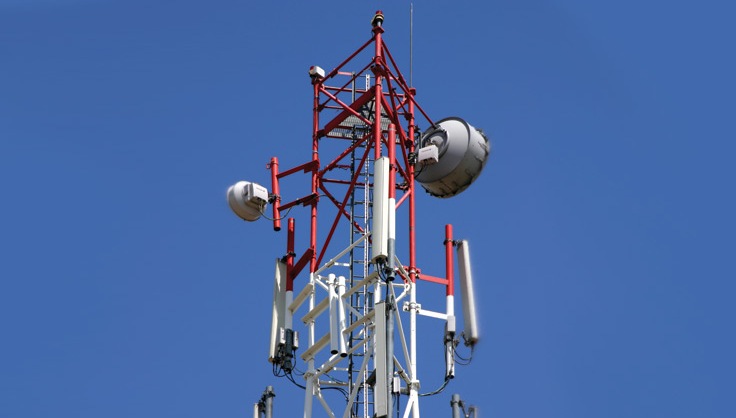
Dudy Cohen, director of Strategic Product Marketing at wireless backhaul maker Ceragon, said telecom network operators must offer new revenue-generating services while constantly upgrading their delivery capabilities.
They are under pressure to offer valuable new services while maintaining a high level of quality of experience to their subscribers. Operators must rapidly expand the capacity of their networks by adding many new cell sites, turning their network into a much denser one, in order to provide 4G / LTE and 4.5G / LTE-Advanced services and, in the future, 5G services. The backhaul network is in a constant state of change.
As backhaul is a major component of sustainable network infrastructure, backhaul spectrum management is a crucial ingredient for success. But lack of backhaul frequencies restricts new cell-site deployment in dense urban environments. Advanced Frequency Reuse breaks through such deployment restrictions, granting operators the freedom to deploy cell sites wherever and whenever they are needed by enabling reuse of frequencies in adjacent backhaul links.
The Data Driven World
The massive amount of smartphones, tablets, and laptops in use, along with the increase in the services they consume, has been the major catalyst for the exponential growth in demand for mobile data, which in 2014 doubled from the previous year.
This trend will accelerate in the immediate future from a surge of wearable devices with bandwidth-consuming, augmented-reality applications and from multitudes of Internet-of-Things (IoT) devices such as connected cars and infotainment apps. New apps and services will, on one hand, create new revenue streams for operators, while, on the other hand, impose new bandwidth and latency requirements on networks.
Effects on the Access Network
As the numbers and uses of mobile devices expand, networks are called upon to supply seemingly endless volumes of capacity. Operators face an unrelenting, steep, uphill battle in their efforts to provide adequate backhaul bandwidth in order to deliver dependable, high quality-of-experience to their bandwidth-hungry user base. And, as the data growth rate irresistibly accelerates, the mere enhancement of radio- access network (RAN) technology is no longer sufficient. A change in network deployment strategies is also required.
Coping with intense capacity pressure calls for more and more segments of the network to move from planning for coverage to planning for capacity. To provide adequate capacity, a significant number of new cell sites must be added, densifying the network. In addition, the capacity of many of the new, as well as the old sites, must be increased. This is generally accomplished in two ways: by evolving to newer-generation technology (resulting in enhanced spectral efficiency) and by employing wider frequency channels.
The Resulting Backhaul Challenges
The effect of demand for capacity on RAN strategies has very significant ramifications for wireless backhaul networks. First, these backhaul networks face certain bandwidth limitations, which prevent them from keeping up with capacity requirements. Second, densification necessitates more links between base stations and aggregation points necessitating a pursuit of new spectrum.
Coping with Bandwidth Limitations
Growing cell-site traffic loads the backhaul links to levels far beyond what operators imagined when those links were first deployed. New backhaul technologies such as LoS MIMO, XPIC, wide channels and efficient modulation techniques like 2048QAM, together with spectrum-utilization enhancement techniques such as header de-duplication and WRED, significantly increase backhaul delivery capacities. However, these are no longer adequate in the face of skyrocketing demand.
Deployment of wider frequency channels is required. Expanding from 28MHz channels to 56MHz, 112MHz and even 224MHz-wide channels is a growing trend that allows better utilization of allocated frequency blocks. With wider channels, fewer guard bands are required, allowing more spectrum to be used for actual signal. However, spectrum for these wider bands is not always available or can be quite expensive and time-consuming to obtain.
Densification
Widening the channels of existing links is helpful, but it is only part of the solution. The process of massive densification of cell sites necessitates more backhaul links and an associated concentration of links at aggregation sites. However, a law of physics limits the number of links that can be deployed. As more links are added, distance between adjacent links necessarily shrinks. As angular separation between links decreases, interference between links using the same frequency increases.
Since the minimal angular separation required for reuse of the same frequency is usually from 90 degrees to 75 degrees (the latter, only with expensive Class-4 antennas), the denser environment encounters a lack of available frequencies. As stated above, these frequencies are often not available or expensive and/or obtainable only after a protracted process.
Advanced Frequency Reuse
Advanced Frequency Reuse enables operators to utilize their existing backhaul frequencies to transport far greater capacities than ever before. By using a single existing frequency channel on adjacent links they can be closer together, accommodating densification and promoting the use of wider channels on new and existing links.
Advanced Frequency Reuse is based on a unique multi-core technology comprised of an advanced, parallel radio-processing engine built around an in-house baseband modem and RFIC chipset. Optimized for the processing of multiple radio signal flows, the multi-core technology multiplies capacity and increases system gain over current technology.
Advanced Frequency Reuse uses revaluated channel parameters to mitigate the interference caused by an adjacent link. While interference naturally increases as angular separation decreases, Advanced Frequency Reuse includes a unique interference-mitigation technique. This is the key to enabling co-existence of low- angle, adjacent links with no fading or quality degradation. With Advanced Frequency Reuse, the angular separation between links using the same frequency can decrease from 90 degrees to as little as 15 degrees allowing more links that use the same frequency channel to co-exist in close proximity.
In Conclusion
Advanced Frequency Reuse bestows numerous benefits on wireless backhaul networks, creating cost-effective solutions to the problem of coping with increasing demand for capacity. AFR grants operators the freedom to deploy cell sites wherever and whenever they are needed and enables reuse of frequencies and the establishment of wider channels as it significantly boosts the capacity of wireless backhaul links.

By Dudy Cohen, director of Strategic Product Marketing at wireless backhaul maker Ceragon





